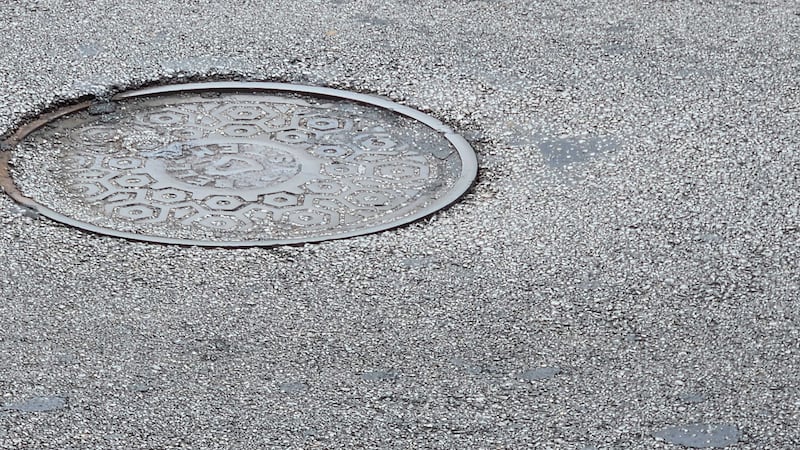MSD gets multi-million dollar grant for PFAS contamination treatment system
Metropolitan St. Louis Sewer District given $3.9 million for wastewater improvement focused on pretreatment

ST. LOUIS, Mo. (First Alert 4) - Some wastewater systems in the St. Louis area will see new construction in the area around Prospect Hill Landfill before 2026. The site specifically part of the grant is under the umbrella of the Metropolitan St. Louis Sewer Division.
The Missouri Department of Natural Resources says this is for the construction of a “granular activated carbon pretreatment system” to treat landfill leachate that’s been contaminated.
MSD tells First Alert 4 that the Prospect Hill Landfill is off of Riverview Drive, just to the north of Scranton Avenue. Currently, this is not any pre-treatment at the site, and the leachate enters the wastewater system and is treated at the Bissell Point Wastewater Treatment Plant.
Specifically, the MDNR says this is at the Prospect Hill Landfill area, and should be completed by July of 2026. The leachate has been contaminated with per- and polyfluoroalkyl substances, commonly referred to as PFAS.
PFAS, according to the Food and Drug istration, are chemicals resistant to grease, oil, water and heat. They were developed almost 80 years ago, and now are common to find in stain and water resistant fabric -- like carpet, cleaning products, paint -- and famously fire-fighting foam.
MSD has a section of their website dedicated to PFAS in the St. Louis area. Officials say they do not use PFAS in wastewater treatment, but because they exist in common products and our physical bodies -- the PFAS are often found in wastewater.
The Environmental Protection Agency says the chemicals break down extremely slowly over long periods of time. PFAS have been found in water, air, fish and soil samples worldwide.
Federal officials say the chemicals of PFAS are very different, but all contain a “carbon-fluorine bond” which is strong and very hard to break down.
Not all PFAS are considered dangerous, and federal sources say some are “authorized by the FDA for limited use in cookware, food packaging, and food processing equipment.”
The EPA says researchers are trying to understand the complex situation presented by PFAS. Federal researchers say they don’t fully understand how often and how much exposure folks have from PFAS, and how harmful they are to the environment.
“The widespread use of PFAS and their persistence in the environment means that PFAS from past and current uses have resulted in increasing levels of contamination of the air, water, and soil,“ the FDA says about the concerns of these substances.
The EPA says removing PFAS from drinking water, and how to dispose of them, are still under research -- and they don’t fully understand all the challenges of properly executing these actions, according to the agency website.
And they can cause human health problems -- the FDA says certain PFAS have entered the blood streams of humans and animals. “While the science surrounding potential health effects of bioaccumulation is developing, exposure to some types of PFAS have been associated with serious health effects.”
“It is important to understand how toxic a chemical is and how much a person is exposed to the chemical before health risks can be identified and steps to reduce these risks can be taken,” the EPA says. “There are likely thousands of PFAS that are currently present in the United States.”
MSD says that the money for this project is a grant, as opposed to the low-interest SRF loans sometimes used by DNR.
While this grant if focused on wastewater pretreatment at the landfill, the FDA’s information shows the level of concern they have on PFAS. The agency tests nearly 1,300 samples of food from across the U.S. regularly for PFAS presence.
For the Prospect Hill Landfill project, the wastewater leachate will be treated before entering the sewer district’s collection system. From the collection point, it will be taken to the Bissell Point Wastewater Treatment Plant, and go through the regular treatment process.
MDNR Director Dru Buntin said one of the department’s priorities is helping Missouri communities maintain wastewater treatment systems. “One way we do that is by offering a variety of financial assistance programs through which we can help qualified communities upgrade key infrastructure, which in turn improves the quality of life for Missourians.”
The funding comes from the “Emerging Contaminants Grant” from the Clean Water State Revolving Fund’s Bipartisan Infrastructure Law allocation. That fund is aimed at improvements to sewers, wastewater treatment, rehabilitation of systems and overflow corrections.
“Communities who borrow from the fund benefit from the below-market interest rate and from assistance provided throughout their project from a department project manager,” the MDNR said.
Avery Martinez covers water, ag & the environment for First Alert 4. He is also a Report for America corps member, as well as a member of the Mississippi River Basin Ag & Water Desk. His coverage goes from corn farms to hunting concerns, and local water rates to buffalo health.
Copyright 2024 KMOV. All rights reserved.













